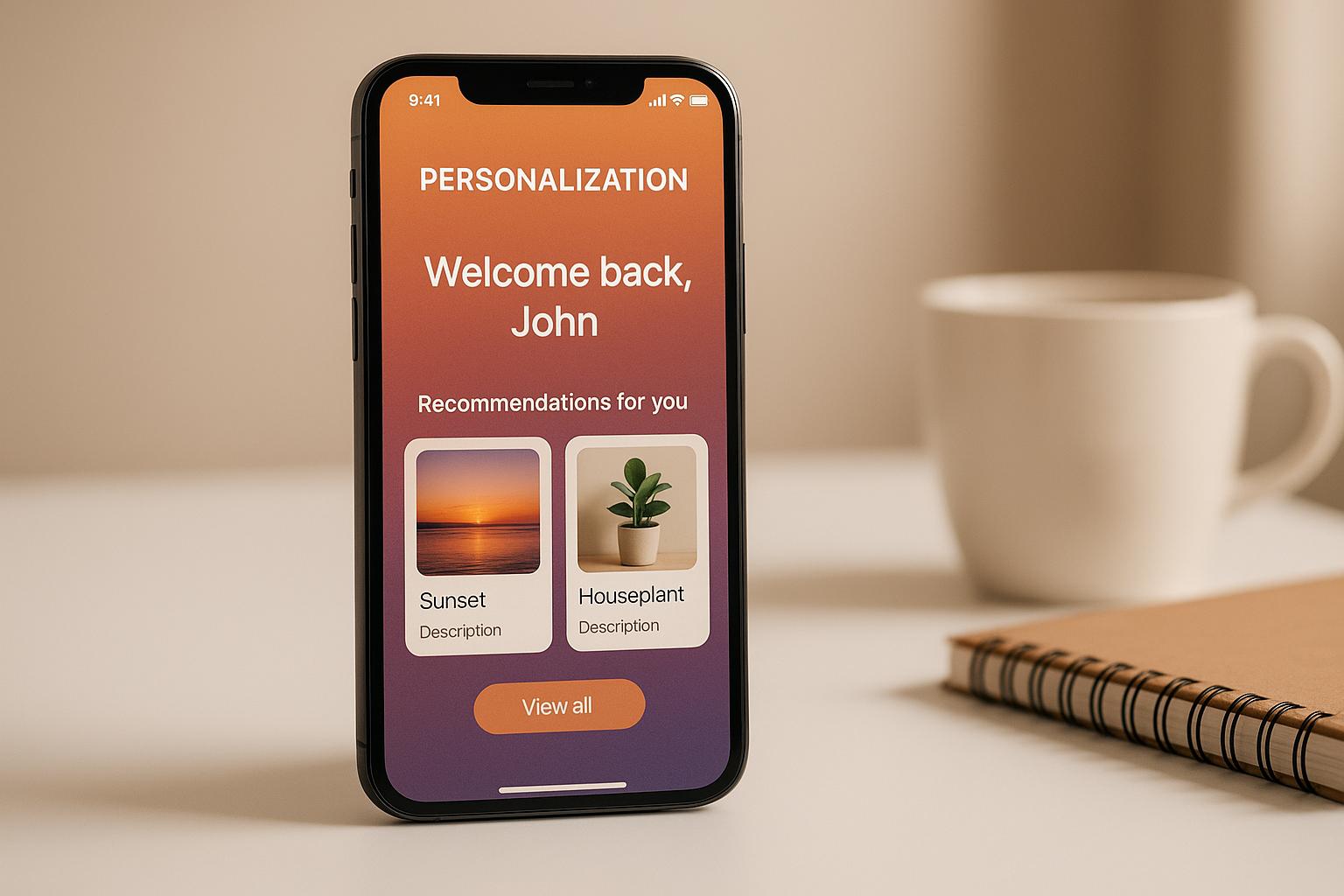Creating a successful SaaS vendor partnership requires clear goals, the right vendor, strong contracts, and ongoing management. Here's a quick summary of the key steps:
- Define Goals: Identify your business needs and set measurable metrics like ROI and user adoption.
- Pick the Right Vendor: Evaluate vendors for compatibility, security, scalability, and cost.
- Draft Clear Contracts: Include SLAs, data ownership terms, and exit plans to protect your business.
- Launch and Integrate: Plan for smooth implementation, test thoroughly, and address issues quickly.
- Manage and Grow: Hold regular strategy meetings, monitor performance, and plan for future needs.
- Address Risks: Monitor vendor reliability, ensure compliance, and safeguard your data with backups and audits.
This checklist ensures your SaaS partnerships are built for long-term success, balancing efficiency, cost, and risk management.
GK Vlog: Evaluating Tech Providers for Delegated Authority
Set Partnership Goals
Set clear goals to align expectations and track progress effectively.
Identify Business Needs
Start by evaluating your current challenges and determine where SaaS solutions can improve operations. Focus on these key areas:
- Process Efficiency: Spot workflows that could be simplified.
- Resource Allocation: Analyze technology costs and team capacity.
- Growth Objectives: Outline what you need to scale successfully.
- Integration Requirements: List existing systems that need to work together.
- Compliance Needs: Note down regulatory and security requirements.
Organize these needs using a priority matrix, considering:
- How urgent the need is
- The potential impact on your business
- Resources required
- Budget availability
Once you've prioritized, set specific metrics to monitor progress.
Establish Success Metrics
Choose KPIs to measure performance and return on investment. Ensure these metrics follow the SMART framework (Specific, Measurable, Achievable, Relevant, Time-bound).
Here are some key areas to track:
| Metric Category | Examples | Measurement Frequency |
|---|---|---|
| Operational Efficiency | - Time to complete processes - Error reduction rate - Resource utilization |
Monthly |
| Financial Impact | - Cost savings - Revenue growth - ROI |
Quarterly |
| User Adoption | - Active user rate - Feature usage - User satisfaction scores |
Weekly |
| Technical Performance | - System uptime - Response time - Integration success rate |
Daily |
Break your goals into short-term and long-term targets:
- Short-term (3-6 months): Focus on hitting early milestones, tracking initial user adoption, and meeting early performance benchmarks.
- Long-term (12+ months): Aim for sustained ROI, market growth, and achieving broader innovation goals.
Defining these metrics ensures you can measure both immediate progress and long-term success.
Choose the Right Vendor
Review Vendor Services
Evaluate vendors based on how well their services align with your business needs, their integration options, scalability, support, and expertise in implementation.
- Service compatibility: Ensure their offerings meet your top business priorities.
- Integration capabilities: Confirm API documentation and existing integration options.
- Scalability potential: Determine if the vendor can handle your business growth.
- Support services: Look into response times, available support channels, and service level agreements (SLAs).
- Implementation expertise: Check their track record with similar deployments.
To make an informed decision, create a weighted evaluation scorecard that covers technical requirements, the quality of support, and their implementation experience.
Check Security Standards
Security is a critical factor when choosing a SaaS vendor. Make sure they meet these key standards:
| Security Aspect | Required Standards | Verification Method |
|---|---|---|
| Data Protection | SOC 2 Type II, ISO 27001 | Request certificates |
| Privacy Compliance | GDPR, CCPA | Review documentation |
| Access Control | MFA, SSO support | Technical assessment |
| Data Encryption | At-rest and in-transit | Security architecture review |
| Backup Systems | Daily backups, disaster recovery | Review SLA terms |
Request documentation on their security certifications, incident response plans, and data handling policies to ensure compliance with industry standards.
Compare Costs and Benefits
Once you've confirmed the vendor's services and security measures, take a close look at costs and potential ROI.
Break down all expenses, including subscription fees, licensing, implementation, training, support, integration development, data migration, customizations, extra storage, and upgrade costs. Then, weigh these against the expected benefits.
Key factors to consider for ROI include:
- First-year costs and efficiency improvements.
- Cost and benefit projections over 3-5 years.
- Annual cost increases and future scaling needs.
- Maintenance savings and productivity boosts.
- Potential delays or challenges during implementation.
- User adoption rates and their impact.
- System reliability and vendor stability.
Use a standardized evaluation framework to compare vendors, balancing both measurable data and qualitative insights. This approach ensures your decision aligns with your needs and budget.
Create Clear Contracts
After selecting the right vendor, it’s crucial to formalize expectations through well-defined contracts.
Set Service Standards
Service level agreements (SLAs) help establish clear performance benchmarks, protecting both parties. Focus on the following metrics when drafting SLAs:
| Performance Metric | Standard | Measurement Method |
|---|---|---|
| System Uptime | At least 99.9% | Monthly availability tracking |
| Response Time | Less than 2 seconds | Real-time monitoring |
| Issue Resolution | Priority 1: 1 hour Priority 2: 4 hours Priority 3: 24 hours |
Support ticket tracking |
| Data Backup | Daily incremental Weekly full backup |
Automated verification |
| Support Hours | 24/7 for critical issues 8am-6pm EST for standard support |
Service desk logs |
Include penalties for SLA violations and outline reporting procedures. Be sure to specify how metrics will be measured and how often reports will be shared to maintain accountability.
Specify Data Rights
A strong contract should clearly outline data ownership and usage to protect your business. Address these key points:
- Data ownership: State that your company retains full ownership of its data.
- Usage rights: Define what data the vendor can access and how it can be used.
- Data location: Identify approved locations for storing data.
- Privacy compliance: Include adherence to GDPR, CCPA, and any relevant industry regulations.
- Data handling: Specify encryption, access controls, and audit trail requirements.
- Return process: Detail how and when data will be returned after contract termination.
Also, include provisions for regular security audits and immediate notification of any breaches to ensure ongoing data protection.
Plan Exit Terms
Exit terms are essential for protecting both parties and ensuring a smooth transition if the relationship ends.
1. Termination Triggers
Define the conditions that allow for termination, such as:
- Repeated SLA violations
- Security breaches
- Payment defaults
- Changes in vendor ownership
- Business needs with a 90-day notice
2. Transition Support
Outline the vendor’s responsibilities during the exit process, including:
- Maintaining services during the transition period
- Assisting with data migration
- Providing knowledge transfer
- Training your team
- Delivering all necessary documentation
3. Cost Structure
Clarify the costs associated with termination, such as:
- Early termination fees
- Data extraction charges
- Transition service costs
- Final payment terms
- Refund policies for unused services
Establish timelines for each step of the exit process and create clear communication protocols to ensure the transition is well-managed and efficient.
sbb-itb-9cd970b
Launch the Solution
Launching your SaaS solution successfully is a key step toward meeting your business objectives. Here's how to ensure the process runs smoothly.
Map Integration Steps
Create a detailed implementation plan with clear milestones and dependencies. Break it into these phases:
- Pre-Integration: Identify data mapping needs, audit existing systems, and allocate necessary resources.
- Technical Setup: Configure APIs, establish security protocols, and prepare a test environment.
- Data Migration: Transfer data, verify its accuracy, and implement backup measures.
- User Access: Set user roles, permissions, and single sign-on configurations.
- Initial Testing: Validate the core functionality and confirm all integration requirements.
Document the technical requirements and dependencies between your current systems and the new SaaS platform. Keep communication open with the vendor's technical team to ensure everything aligns during the integration process.
Once the integration is mapped out, move on to testing and validating the system's performance.
Test and Adjust
After integration, a strong testing process is essential to confirm the system works as intended and to address any issues quickly:
-
Initial Testing Phase
- Run the new system alongside the existing one with a pilot group.
- Record any issues in a centralized system.
- Prioritize fixes based on how critical they are.
-
Performance Monitoring
- Track system performance, user adoption rates, and recurring error patterns.
-
Adjustment Process
- Hold regular reviews to assess progress.
- Roll out fixes in stages and document all changes.
- Keep stakeholders informed about updates and progress.
Set up an ongoing feedback loop with users to identify pain points and potential improvements. Keep a detailed log of adjustments and their impact on performance. Regular check-ins with the vendor's support team can help tackle any technical challenges that come up.
Manage the Partnership
Once your solution is running smoothly, it’s time to focus on building a stronger partnership and planning for growth.
Plan for Growth
After launch and confirming everything is stable, shift your attention to scaling the partnership for the long haul.
-
Regular Strategy Meetings
Set up consistent meetings to review your roadmap, capacity, integration, and potential upgrades. These discussions are key to evaluating how scalable your system is. -
Scalability Check-Ins
Keep an eye on usage, performance, capacity, infrastructure, and user feedback. Regular assessments ensure the system can handle growth without issues. -
Planning for Enhancements
Look for chances to develop custom features, automate processes, or expand integrations. Open communication with your vendor ensures your needs align with their product updates.
Control Risks
After conducting thorough vendor assessments and securing contracts, the next step is to address risks with well-defined strategies.
Key Risk Areas to Monitor
Pay attention to these critical risk categories:
-
Vendor Finances
Keep an eye on public reports and industry news for any shifts in leadership, funding, or market standing. -
Service Reliability
Track system uptime and performance metrics. Establish clear benchmarks like:- Maximum allowable downtime
- Recovery time objectives (RTO)
- Recovery point objectives (RPO)
-
Compliance Updates
Stay updated on regulations impacting your industry and data handling requirements to avoid compliance issues.
Once these risks are identified, the focus should shift to securing your most sensitive data.
Safeguard Your Data
Protecting both business and customer data is critical. Here's how:
-
Access Control
Use role-based access control (RBAC) to limit data access. Regularly audit permissions and revoke unnecessary privileges. -
Data Encryption
Ensure your vendor employs encryption methods that meet industry standards. -
Regular Audits
Schedule quarterly reviews to examine:- Data access logs
- Security incidents
- Compliance records
- User authentication processes
Pair these measures with a solid backup plan to maintain operations even during unexpected disruptions.
Develop Backup Plans
A reliable backup plan is essential for keeping your business running smoothly during interruptions:
1. Data Backup Strategy
Regularly back up critical data in formats that are easy to restore. Automate backups based on how often your data changes.
2. Temporary Solutions
Identify and document manual processes or offline alternatives to use during service outages.
3. Exit Strategy
Create a detailed plan for transitioning away from a vendor, including:
- Steps for exporting data
- Migration timelines
- Required resources
- Communication plans
- Staff training for the transition
These steps ensure your business can adapt to challenges without losing momentum.
Conclusion
When wrapping up your checklist, keep these important points in mind for fine-tuning your strategy.
Building strong SaaS vendor partnerships takes careful planning and attention to detail at every step. Success hinges on setting clear objectives, thoroughly evaluating vendors, and managing risks effectively.
Here’s how to strike the right balance between efficiency and risk management:
- Define measurable success metrics that align with your business goals.
- Enforce strong security measures to protect data and maintain trust.
- Draft detailed service level agreements (SLAs) with clear performance expectations.
- Plan for disruptions by having contingency strategies in place.
Partnerships aren’t static - they grow and change over time. Regular reviews, open communication, and proactive problem-solving are key to keeping them successful.
To ensure success, focus on these essential practices:
- Keep thorough documentation of all agreements, performance metrics, and communications.
- Manage risks and plan for growth by using scalable systems that can adapt to changing needs.



